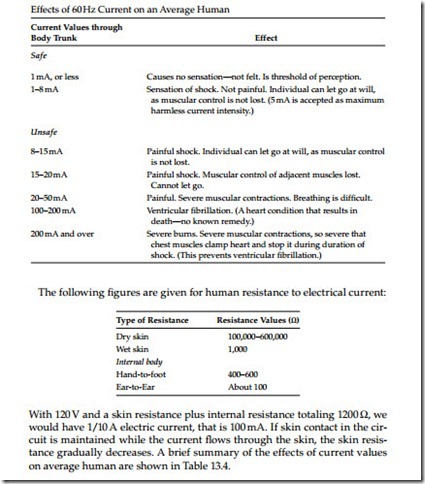Effects of Electrical Shock
Current is the killing factor in electrical shock. Voltage is important only in that it determines how much current will flow through a given body resistance. The current necessary to operate an l0 W light bulb has eight to ten times more current than the amount that would kill a lineman, that is, if it actually breaks through skin and body resistance and current of this amperage flows in the body. A voltage of 120 V is enough to cause a current to flow which is many times greater than that necessary to kill. Currents of 100 to 200 mA cause a fatal heart condition known as ventricular fibrillation for which there is no known remedy.
TABLE 13.4
Related posts:
Rectifier and Filter Circuits:Power Supply Filter Circuits.
Engine installation:Trucks and other motor vehicles
Starting and generating systems:Starting aids
SOLAR POWER:SOLAR SITES AND LAND RESOURCES
Generators:Standards.
The power system:Transmission.
The Current Situation and Perspectives on the Use of Hydropower for Electricity Generation:Greece
Another Groups of Thermal Optimized Modulation Methods of Three-Level Neutral-Point-Clamped Inverter...
POWER FROM WASTE:LANDFILL WASTE DISPOSAL
Limits of the Power Controllability of Three-Phase Converter with Unbalanced AC Source
AN INTRODUCTION TO ELECTRICITY GENERATION:SIZE OF THE INDUSTRY
Capacitor Application:Capacitor Ratings
POWER SYSTEM ENERGY STORAGE TECHNOLOGIES:FLYWHEELS
HYDROPOWER:SMALL HYDROPOWER
POWER FROM WASTE:WASTE POWER GENERATION TECHNOLOGIES
